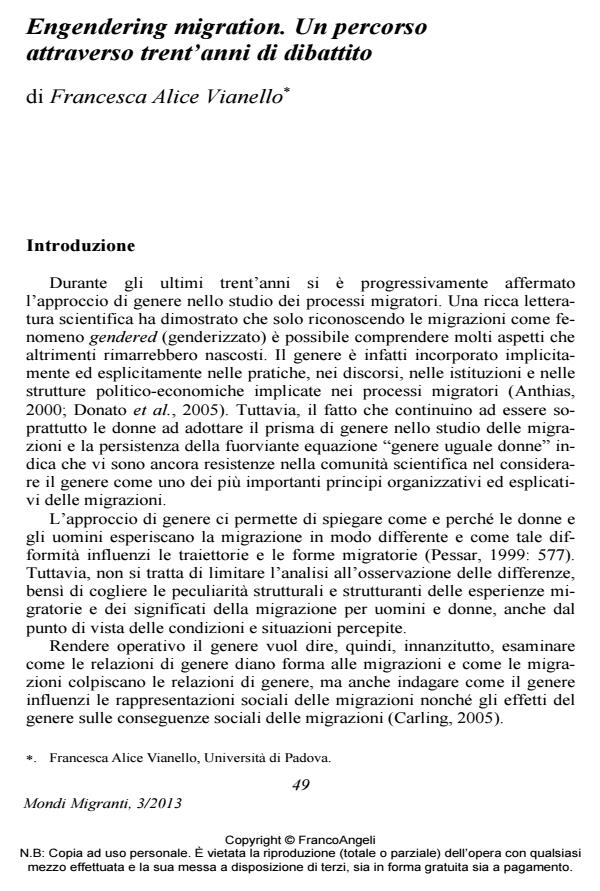Engendering migration. Un percorso attraverso trent’anni di dibattito
Titolo Rivista MONDI MIGRANTI
Autori/Curatori Francesca Alice Vianello
Anno di pubblicazione 2014 Fascicolo 2013/3
Lingua Italiano Numero pagine 18 P. 49-66 Dimensione file 649 KB
DOI 10.3280/MM2013-003003
Il DOI è il codice a barre della proprietà intellettuale: per saperne di più
clicca qui
Qui sotto puoi vedere in anteprima la prima pagina di questo articolo.
Se questo articolo ti interessa, lo puoi acquistare (e scaricare in formato pdf) seguendo le facili indicazioni per acquistare il download credit. Acquista Download Credits per scaricare questo Articolo in formato PDF

FrancoAngeli è membro della Publishers International Linking Association, Inc (PILA)associazione indipendente e non profit per facilitare (attraverso i servizi tecnologici implementati da CrossRef.org) l’accesso degli studiosi ai contenuti digitali nelle pubblicazioni professionali e scientifiche
- Ukrainian Migration to the European Union Francesca Alice Vianello, pp.163 (ISBN:978-3-319-41774-5)
- Invecchiamento e pensioni delle lavoratrici domestiche migranti. Uno studio comparativo tra il caso delle ucraine in Italia e il caso delle peruviane in Spagna Francesca Alice Vianello, Angeles Escrivá, in MONDI MIGRANTI 1/2019 pp.171
DOI: 10.3280/MM2019-001010
Francesca Alice Vianello, Engendering migration. Un percorso attraverso trent’anni di dibattito in "MONDI MIGRANTI" 3/2013, pp 49-66, DOI: 10.3280/MM2013-003003